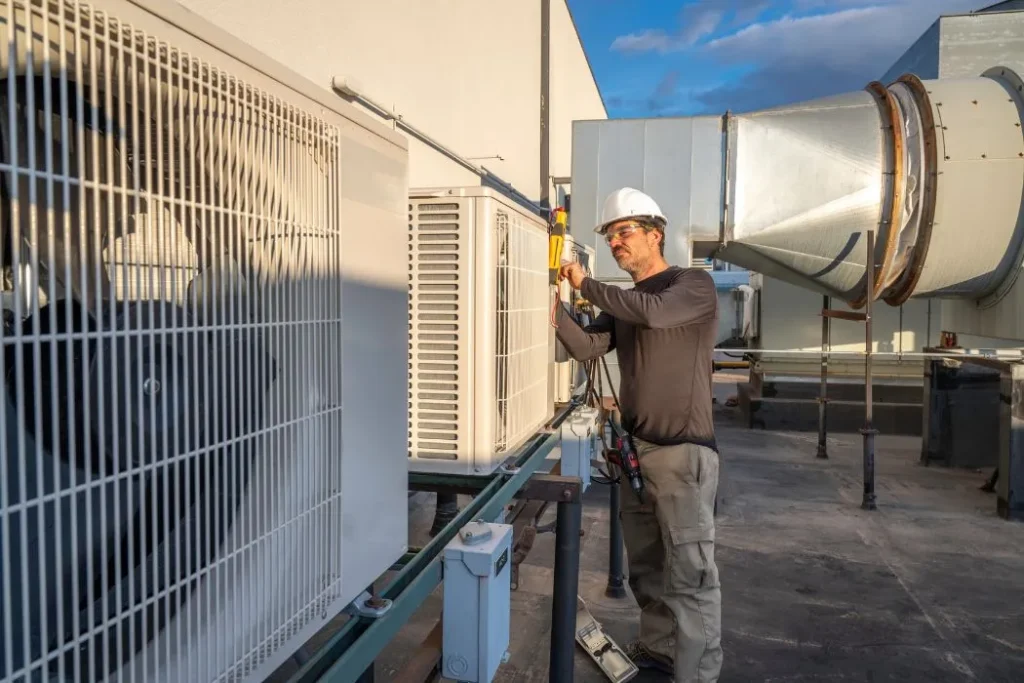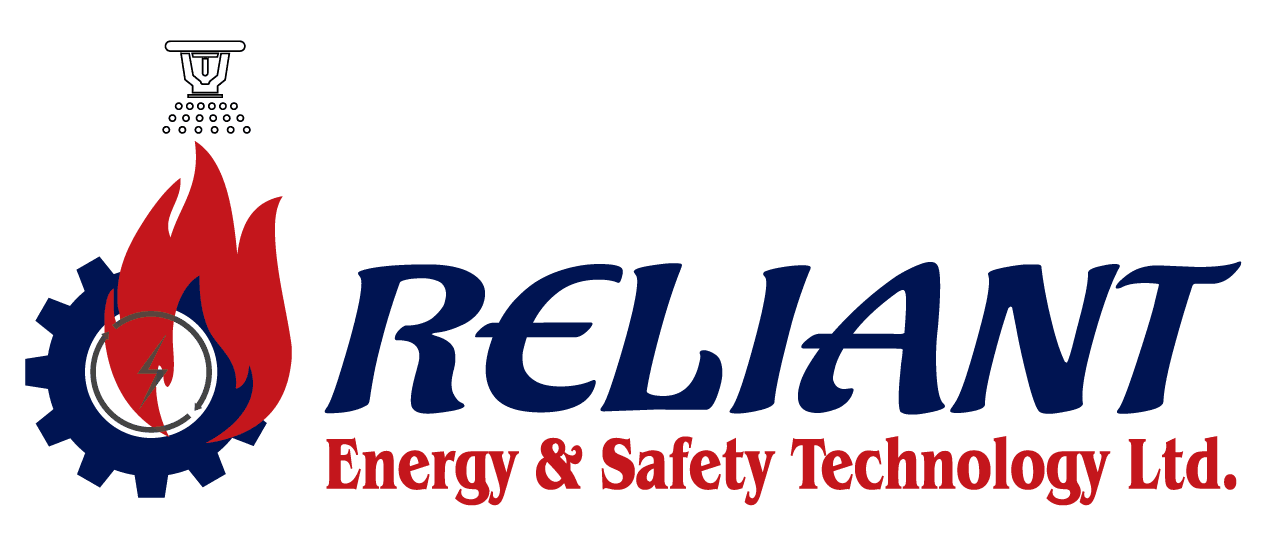Introduction to HVAC Systems
Heating, Ventilation, and Air Conditioning (HVAC) systems are integral to maintaining comfort and air quality in buildings. Whether you’re designing a new home, renovating a workspace, or upgrading a commercial property, understanding the various HVAC options is crucial.
Split HVAC Systems
Split HVAC systems are the most common for residential use, featuring separate heating and cooling units controlled by a single thermostat. The heating unit, typically gas-powered, is located indoors and uses fans to distribute heat via ductwork. The outdoor cooling unit uses refrigerant, compressors, and fans to cool air and expel heat.
For more details on our range of services, visit our Electrical Installation Services page.
- Key Features:
- One thermostat controls the entire system.
- High efficiency in both heating and cooling.
- Pros: Cost-effective and widely available.
- Cons: Requires ductwork, which may lead to energy loss.
Hybrid Split Systems
Similar to traditional split systems, hybrid systems can alternate between gas and electric power for heating. This flexibility reduces energy consumption, especially in milder climates, while offering cost-efficient temperature control.
- Energy Efficiency: These systems can switch between gas and electric power, reducing energy costs in moderate climates.
- Ideal For: Homes aiming for energy efficiency without sacrificing heating power.
- Limitations: May not be as effective in extremely cold climates.
Packaged HVAC Systems
Packaged systems house both heating and cooling components in a single compact unit, ideal for small spaces. Typically installed on rooftops or near foundations, these systems connect to ducts through a single access point and are easier to maintain than split systems.
- Installation: Typically installed on rooftops or near the foundation.
- Cost Efficiency: Lower initial installation costs.
- Maintenance: Easier to maintain due to the single-unit structure.
Zoned HVAC Systems
Zoned systems divide a building into multiple temperature zones, allowing customized control for each area. This can involve separate HVAC systems for larger buildings or dampers within ductwork to regulate airflow. Zoning improves comfort and energy efficiency by directing air only where needed.
- Techniques:
- Separate HVAC units for different zones.
- Dampers in ductwork to control airflow.
- Benefits: Personalized comfort and improved energy efficiency.
- Challenges: Initial setup costs can be high.
Duct-Free Mini-Split Systems
Ductless mini-split systems are room-specific HVAC solutions often found in multifamily homes, offices, and hotels. These systems include an outdoor compressor, indoor air-handling units, and thermostats for each zone. Copper tubing connects the indoor and outdoor components, with one compressor supporting up to nine indoor units.
Though costly to install, duct-free systems reduce energy waste by heating and cooling only occupied rooms. However, they are less effective in freezing temperatures, requiring supplemental heating in colder climates.
- Energy Efficiency: Reduces energy loss from ductwork.
- Drawback: Higher upfront installation costs.

Hydronic Heating Systems
Hydronic heating systems use heated liquid instead of air to distribute warmth. A boiler heats water, which flows through pipes under floors, radiators, or baseboards to radiate heat throughout the building. Radiant flooring options provide consistent and silent heating.
- Benefits: Silent operation and even heat distribution.
- Ideal For: Homes seeking energy-efficient and sustainable heating solutions.
Portable Spot Cooler
Spot coolers are mobile air conditioning units designed for large rooms, warehouses, or outdoor areas. They cool ambient air via a refrigerant coil and remove humidity. The leftover warm air exits through a flexible exhaust tube that must lead outdoors.
These units are easy to move and operate but require an accessible vent for proper exhaust.
Key Feature: Portable cooling for flexible applications.
Portable Heat Pump
Portable heat pumps function like spot coolers but include heating capabilities. They draw in outdoor air, warm it using a condenser coil, and circulate it indoors. A reversing valve enables seamless switching between heating and cooling, making them suitable for varying climates.
Key Feature: Dual-function portable heating and cooling.
Why Reliant-Est.com is the Best Choice
Reliant-Est.com stands out with its customer-first approach, expert knowledge, and tailored HVAC solutions.
- Why Choose Us:
- Industry-leading expertise.
- Comprehensive range of HVAC systems and services.
- Dedicated customer support and satisfaction guarantee.
Visit our detailed guide to know more about essential fire safety tips for manufacturing plants.
Conclusion
Choosing the right HVAC system is crucial for comfort, efficiency, and cost savings. At Reliant-Est.com, we ensure you make the best choice with our expertise and tailored solutions. Contact us today to learn more!
FAQs on HVAC Systems
Q1. What is the most energy-efficient HVAC system?
Hybrid split systems are highly energy-efficient due to their dual power source capability.
Q2. How do I choose the right HVAC system?
Consider your building size, climate, and budget. Consulting professionals like Reliant-Est.com can simplify the decision.
Q3. Are ductless systems better than ducted systems?
Ductless systems are more energy-efficient but may have higher installation costs.
Q4. How often should I service my HVAC system?
Routine maintenance should be performed twice a year to ensure optimal performance.
Q5. Can portable HVAC systems cool large spaces?
Yes, spot coolers are designed for large spaces like warehouses and outdoor areas.
Q6. Why is regular HVAC maintenance important?
Maintenance improves system efficiency, reduces energy bills, and prolongs the lifespan of your system.

